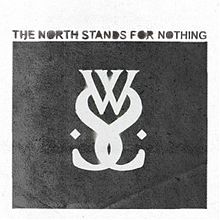For beginner producers it is important to understand the different microphone types and where they are typically used. The two main types of microphones are dynamic and condenser mics both of which have their own properties which make them more suitable in different situations. Condensers are the most common microphones found in studios as they have a greater frequency and transient response (the ability to reproduce the "speed" of an instrument or voice). They also require their own power source (phantom power) and generally have a louder output but are more sensitive to louder sounds. Dynamic microphones don't have a frequency and transient response as accurate as condensers however they are a lot less fragile and can handle louder sounds making them more suited for live recordings.
When recording acoustic guitar in a studio environment we would typically record using two microphones positioned at different parts of the instrument (stereo configuration). However, as many first time bedroom producers will only have the one microphone at their disposal, we will start by exploring a single microphone position. Using a condenser microphone with the polar pattern (which gives directional sensitivity information) set to cardioid, position the microphone around six inches from the guitar between the sound hole and the top of the fretboard. The cardioid pattern will concentrate the sensitivity towards the front of the mic giving a small amount of room ambience from behind the mic. By positioning the microphone closer to the sound hole it will become more sensitive to the bass frequencies giving a warmer sound. Placing it more towards the top of the fretboard will give brighter tones and string noise. By moving it between these two positions, you can determine the best position for producing an all round balanced tone. This will vary between guitars and microphones, so experimentation is crucial, but as a general rule the “sweet spot” is around the 12th fret. When deciding how far from the guitar to place the mic it is important to consider the proximity effect. This rule describes an increase in bass frequencies when the microphone is closer to the sound source and is covered in another of our blogs by Ryan Tynman under the title “The Proximity Effect.” You don't want it to sound too boomy and boxy which will lessen the high frequency detail but at the same time you don't want to loose the warmth. The single condenser technique can also be used for double-tracking where the performance is recorded twice and then each take is panned hard left and right giving a wider stereo image.
Once you have mastered the single miking techniques you can move onto the stereo miking techniques of which there are many variations. By using a pair of microphones we can accurately re-create the stereo characteristics of a recording. For the purpose of this blog we will concentrate on three of the main ones; Blumlein, Spaced Pair and XY.
The Blumlein configuration was developed by Alan Blumlein towards the beginning of the 20th century and requires two bi-directional (figure of 8) microphones placed at a 90° angle. Bi-directional mics are equally sensitive at the front and the back so with this technique a decent room ambience is important. The microphones are place one on top of the other as close as possible without touching. This technique produces a wide and clear sound that can accommodate most acoustic guitar tracking. However, if the room acoustics are not desirable it is probably best to go with another more directional technique.
The Spaced-Pair technique which involves two parallel directional mics, with one pointing at the sound hole and the other at the fretboard (around 2.5ft from each other), is a good example of a configuration which is more directional. When deciding how far from the guitar you should place the mics it is useful to consider the 3:1 rule which states that the microphones should be placed three times farther apart than they are from the sound source. So if the mics are 2.5ft from each other, they should be placed 0.83ft (around 10 inches) from the guitar. This guideline helps to minimise phasing issues. Just like with the single condenser techniques, you can play around with these distances to create the desired tone. This technique is be good for capturing fret detail like pull-offs and hammer-ons. Again see Ryan's blog entry “The Three to One Rule” for more detail.
Click Here to find out more about our Recording services!


























